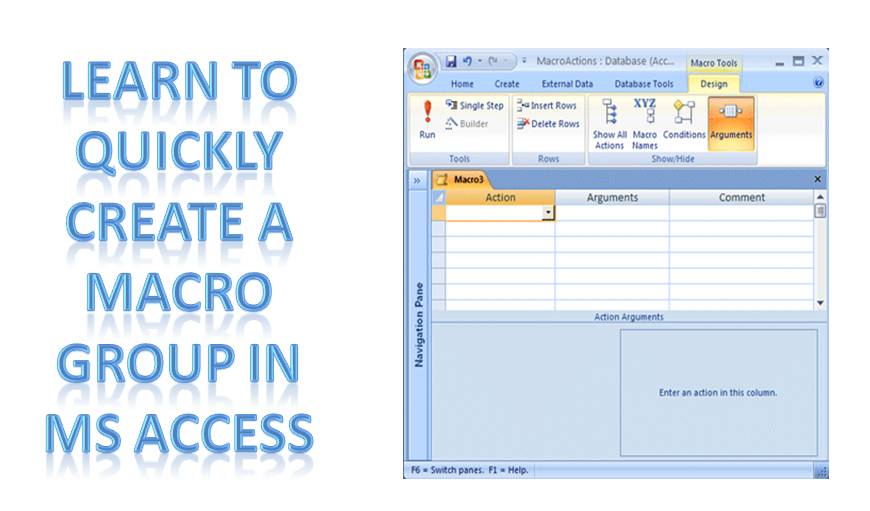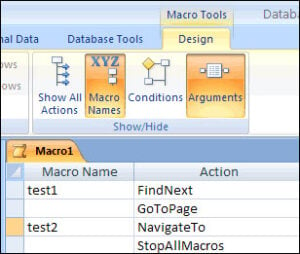In this article, we attempt at creating a Macro Group in MS Access instead of creating several standalone macros.
Macros in MS Access allow you to automate actions. You can opt for creating a macro to get a particular task done. You might also want to create group macros which can be used for automating the related task to the one that you have automated. If you are making use of the 2007 edition of MS Access, you will have the option of using the macro objects for containing the macros that you have created. You can also opt to get them embedded in the event properties that are available for the reports, forms, and controls belonging to MS Access. These embedded macros will also become a part of the control which they have been embedded in.
When using macros in MS Access, you can either opt for creating a standalone macro, or group macros. Both have their own benefits and procedures. If a macro group is what you are interested in, then keep reading for the detailed procedure.
Follow these steps for building the Macro Group in MS Access
A macro group is created for grouping multiple related macros in one macro object.
Go to Other group, in the Create Tab, click Macro. If you do not find this command, click on the arrow below the Module or Class Module option. Now select Macro.
- In the Design tab, select Macro Names from Show/ Hide group. The Macro name column will now be displayed in Macro Builder.
- Select a name for the first macro in the macro group to be entered in Macro Name column.
- Now add all the actions that you want your first macro from the group to perform.
- Go to Action column and click on the arrow to get a list of actions.
- Select the type of action you want to perform.
- Specify Action Arguments, if necessary.
- Proceed towards another empty row, and add a name for the macro that is next up in line for Macro Name column.
- Select the actions that you want this macro to perform.
- The above two steps need to be repeated for all macros that are there in the group.
Important tips to Consider
- While saving the macro group that you have created, the specified name will be given to the group of macros. To refer to one given macro in the whole group, make use of the following syntax:
- macroname
- If you are making use of the Run icon on Design Tab, or double-clicking on the macro in Navigation Pane to run it, then just the first macro from your group will be executed. It will stop when it comes to the second macro.
Making use of Macro groups in MS Access can be of great help as it helps you save time by automating multiple operations, along with a few related tasks. It is advisable to create macro groups instead of standalone macros, as these groups alone can do the task of multiple standalone macros.
If you happen to use MS Access in your business, it is critical that you remain aware of corrupted mdb files. In many cases standard recovery features present in the application may not work and its always advisable to take recourse specialized recovery software like DataNumen Access Repair to avoid data loss.
Author Introduction:
Vivian Stevens is a data recovery expert in DataNumen, Inc., which is the world leader in data recovery technologies, including sql recovery and excel recovery software products. For more information visit www.datanumen.com
 Go to Other group, in the Create Tab, click Macro. If you do not find this command, click on the arrow below the Module or Class Module option. Now select Macro.
Go to Other group, in the Create Tab, click Macro. If you do not find this command, click on the arrow below the Module or Class Module option. Now select Macro.